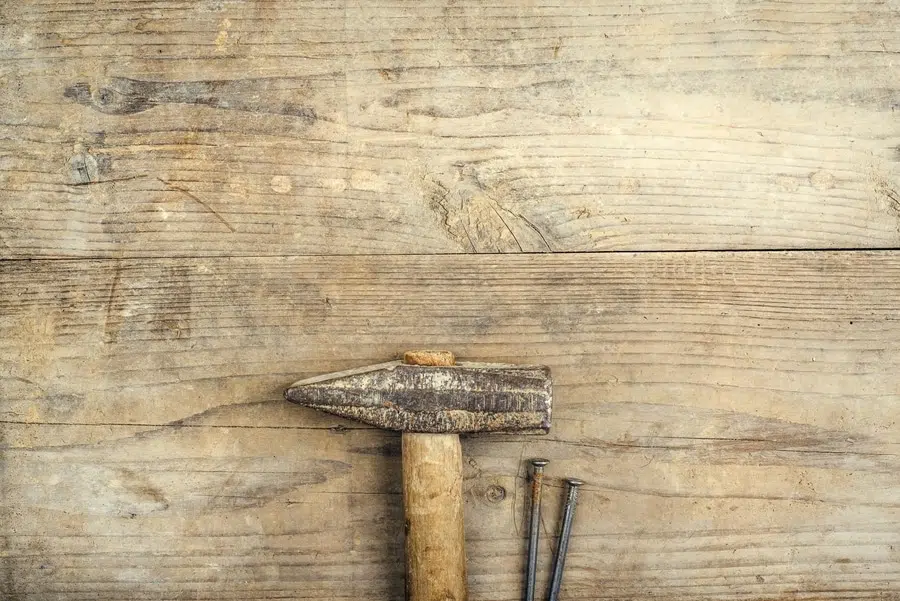Risky play. That’s an outdoor experience, right?
Well, yes it can be, and it is certainly found more in an outdoor context. But risky play can definitely also be an indoor experience as well.
The instinct for risk in play is a continuous one, and does not just turn itself off when children go indoors.
In that case, what are some examples of indoor risky play? Examples of indoor risky play include:
- Climbing up indoor climbing equipment, or creating structures to climb (such as stacks of blocks)
- Using dangerous tools such as saws or hammers
- ‘Disappearing’ games such as hide-and-seek, and hiding in dens
Some elements of risky play are better suited to outdoor play. One example of this, is coming into contact with dangerous elements such as fire. This is pretty tricky to really try out inside!
However, if you think of risky play as just an outdoor experience, you may well not be getting the most out of its potential.
I am going to look at first quickly what risky play is, and then give lots of real-life examples of indoor risky play in action.

What Is Risky Play?
Risky play is a form of play that is thrilling! It involves risk-taking, and gets children learning about boundaries and themselves. It is challenging, and gets their full focus. You can find out what risky play looks like in reality by reading my in-depth article – 25 examples of risky play.
It is normally defined in six categories:
- Playing with height, such as climbing
- Using dangerous tools such as saws or drills
- Disappearing games, such as hide-and-seek and getting lost
- Being near to dangerous elements such as fire and water
- Experiencing speed, such as on a bike or swing
- Rough and tumble play, such as chase or play fighting
Risky play that is managed well has a huge number of benefits for children. You check out the 21 most important benefits here, along with some examples thrown in as well.
Right, now we know broadly what it is, let’s see how this can be tried in indoor learning.
Risky Play Indoor Examples
Of the six categories of risky play that exist, I think that there are three that stand out as being excellent for indoor play. Those are:
- Playing with height
- Using dangerous tools
- Disappearing games
Let’s look at these three, one at a time:
1.Playing With Height Indoor Examples
Although there is not quite the same amount of scope indoors as outdoors, there are still many indoor experiences possible.
Children can walk up high staircases. They can walk to the top of tall buildings. They could climb to the battlements of a castle, or stand on the balcony of a house.
Children can also build with construction materials inside. For example they can stack blocks and crates, and attempt to make walkways over these using planks. Using loose parts both inside and outside is a great source of open-ended learning, as well as sometimes containing an element of risk. You can find my favorite 40 loose parts play activities by reading this.
Children can experience indoor climbing walls, or often schools have wall ladders or indoor climbing frames that they can experience.
If they go to soft play areas, children can experience climbing up steps, nets or tubes.
2. Using Dangerous Tools
I would say for the most part that this activity can be done for the most part as well inside as out. Supervision is very important when carrying out any activities like this. I would supervise 1:1 when any dangerous tools are involved.
Some great examples of using dangerous tools indoors are:
Hammers – You can get either small child-friendly mallets, or you can use larger hammers that are more like the sort adults would use. Good hammering activities include hammering golf tees into different things (such as pumpkins, peg boards, or even a lump or plasticine).
You can hammer pins or small nails into cork-boards, or small pieces of soft wood.
Knives – You can use knives to whittle the bark of sticks. This could be done for some kind of stick crafts, or you can whittle sticks for use to eat food over the fire outside.
The classic way of eating food round a forest school fire circle is to find green sticks, as these are the ones that will not burn. Then whittle the bark off, and put marshmallows or other goodies on the sticks to heat over the fire.
Saws – It is in many ways easier to use saws indoors than outdoors. You require some kind of vice or clamp to hold the wood that you are sawing. You can saw dry sticks, or small pieces of wood.
A bow saw is the standard saw to use with young children. This is a kind of hacksaw with quite thin teeth. Children often use two hands on the bow saw when using it.
Drills – These are often used for drilling holes in small slices of wood. You use the hand-drills, never an electric version.
Once again, it is good if the children use two hands to operate the drill. Great for wood crafts, mobiles, and just experimenting as well.
If you would like to find out more about tool activities that children can try, then have a look at these 10 forest school tool activities.
3.Disappearing Games
Although you would usually have more space outside for these kinds of games, there is still scope to play them indoors.
The idea of disappearing games is that children find a space where they are out of sight of others. This could be under a table, in a box, or in a cosy corner hidden away in a room somewhere.
Hide and seek is the ultimate disappearing game, and that, arguably, is probably easier to play indoors than out. There are often many more nooks and crannies that you can find to keep yourself concealed.
Role-play areas are a great medium for incorporating risky play. If you find some large cardboard boxes, they are great for all sorts of experiences.
Children can get inside them. They enjoy the thrill and the danger of the lid closing, or of others putting a sheet over the top.
Children enjoy creating dens that are so dark, that no light can get in. This desire for being isolated and in a dangerous space is the desire for risky play.
Creating different spaces around the room for more solitary play really helps as well. Putting a sheet over a table, or having a dark tent, gives the children an opportunity to experience the wonder of ‘disappearing’, a few moments where no one can see them.
What Type Of Risky Play Are More For Outdoors?
Not all risky play can take place indoors in a safe and sensible way. Probably the three types of risky play that are much harder to pull off indoors are:
- Experiencing dangerous elements
- Playing with speed
- Rough and tumble play
Let’s look at these in more detail:
1.Experiencing Dangerous Elements
The two key elements here are fire and water. Though children will often experience water in a water tray or similar, it is not the same level of risk and danger as a pond or stream.
Clearly, lighting fires indoors as well is certainly not a wise choice!
Experiencing fire is a key element of forest school. If you are interested in finding out more about what forest school activities look like in reality, then you can check out this article that I wrote about it.
2.Playing With Speed
Generally you are more limited in playing with speed indoors because of lack of space.
Playing with speed is activities like riding bikes or skateboards, rope swings or playground swings, or going on boats or skiing.
Possibilities are things like indoor swings, or physical games indoors. However, there is not the same deep level of controlled risk and thrill that you will find outside.
3.Rough And Tumble Play
This one is certainly debatable, but I would say most practitioners prefer not to see it in an indoor environment.
Indoors there is usually more limited space, and so playing chase and play fighting becomes a bit more dangerous. You can injure others inadvertently, or make contact with a hard surface such as a table corner.
It’s not completely impossible indoors, just better outside.
Conclusion
All in all, you really can incorporate many aspects of risky play into your indoors place space.
This will challenge children and get them learning more deeply about themselves. By building dens, playing hiding games, building and climbing, children learn to how to experience and manage risk, and become more resilient and independent.
If you’ve found this article useful, then why not take a look at one of these:
